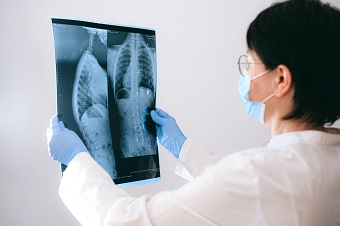Tuberculosis (TB) is a contagious disease caused by bacteria called Mycobacterium tuberculosis (MTB), a serious problem for the whole world. TB is one of the top 10 causes of deaths worldwide. Peoples infected with MTB called latent TB have a 5-15% lifetime risk of falling ill with active TB. Annually around 3 million death have been reported where 2 million adults and 1 million children are included. There are several types of TB primarily pulmonary TB (PTB) which is not common but extra-pulmonary TB (bone, intestine, eye) are also highly prevalent.
In recent times fungal infections commonly known as mycosis are on tremendous rise and thus is an area of great concern and interest. The chronic nature of TB is significantly exacerbated if accompanied by fungal infections, which usually remains undiagnosed and thus most of the time untreated. Thus, mycotic infections add fatal dimensions to pulmonary TB. Furthermore the problem is still compounded by the multidrug resistant (MDR) phenomenon prevalent in both these pathogens.
Invasive fungal infections are observed as co-infection with MTB in significant number of cases. The frequency of Aspergillus, both branching and dichotomous infection, have been observed particularly Aspergillus flavus, Aspergillus fumigatus, Aspergillus niger, and Aspergillus oryzae. Blastoconidia and pseudohyphae forms of yeast were also observed as co-infection with MTB. Additionally, Candidiasis caused by human fungal pathogen Candida albicans have been largely reported in cases of PTB. Also, this fungus is present as commensal flora in human and even ubiquitously in a hospital environment, air, or in inert surfaces such as floors, roofs and in the food as well, adding an enhanced chance of acquiring infection.
Human commensal Candida has evolved as a potentially pathogenic fungus, instead of an inoffensive guest in mucous material of patients with bronchopulmonary diseases, which might upsurge the complications in these diseases. Candida co-infection cases presented C. albicans (59%), followed by C. tropicalis (20%) and C. glabatra (20%). However, in the PTB cases Candida species is the most common fungal agent isolated from patient’s mucus. There is about 15–32% occurrence rate in different studies of PTB coinfection with Candida.
In case of Candidiasis, the pathogenic species of Candida have their significance not only due to severity of their infection but also from their ability to develop resistance against anti-fungal drugs. Widespread and prolonged use to azoles has led to the rapid development of MDR, making a major hurdle in antifungal therapy. Indeed, significant number of studies conducted to diagnose the fungal infection have shown PTB infection. Most of the times these fungal infections are not diagnosed and get confused with TB. Pulmonary fungal infections have clinical and radiological characteristics similar to TB leading to be misdiagnosed as TB. Further it is noticed that the coinfection of TB with Candidiasis in males are higher than in female patients. Risk factors of Candidasis coinfection with MTB are smoking, diabetes, advanced age, and low body mass index. Pulmonary Candidal coinfection with MTB influences treatment of either of the infections and consequently responsible for increased mortality. Therefore, detailed understanding is urgently required to control Mycosis-Mycobacterial coinfections for management of TB and improved public health.
References:
- Sani FM, Uba A, Tahir F, et al. Spectrum of pulmonary fungal pathogens, associated risk factors, and anti-fungal susceptibility pattern among persons with presumptive tuberculosis at Gombe, Nigeria. Int J Mycobacteriol. 2020;9(2):144-149. doi:10.4103/ijmy.ijmy_46_20
- Soedarsono S, Prasetiyo YD, Mertaniasih NM. Fungal isolates findings of sputum samples in new and previously treated cases of pulmonary tuberculosis in dr. soetomo hospital surabaya, Indonesia. Int J Mycobacteriol. 2020;9(2):190-194. doi:10.4103/ijmy.ijmy_1_20
- Hadadi-Fishani M, Shakerimoghaddam A, Khaledi A. Candida coinfection among patients with pulmonary tuberculosis in Asia and Africa; A systematic review and meta-analysis of cross-sectional studies. Microb Pathog. 2020;139:103898. doi:10.1016/j.micpath.2019.103898
- Jabbari Amiri MR, Aghili SR, Shokohi T, et al. Invasive forms of Candida and Aspergillus in sputum samples of pulmonary tuberculosis patients attending the tuberculosis reference laboratory in Ghaemshahr, Northern Iran: An analysis of samples collected during the past 10years. Int J Mycobacteriol. 2016;5 Suppl 1:S179-S180. doi:10.1016/j.ijmyco.2016.08.010
